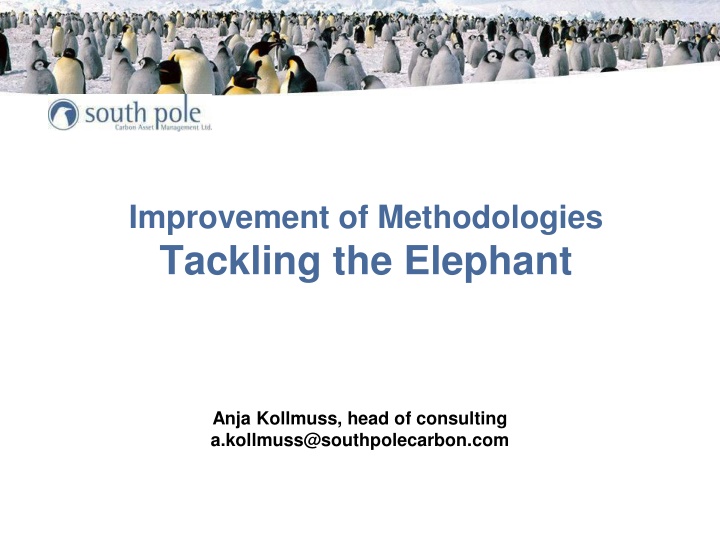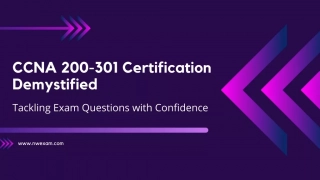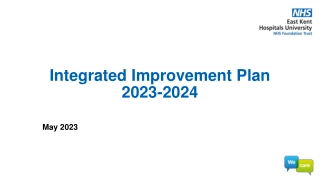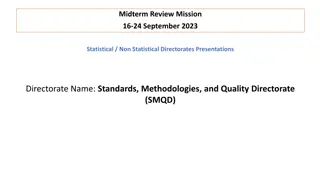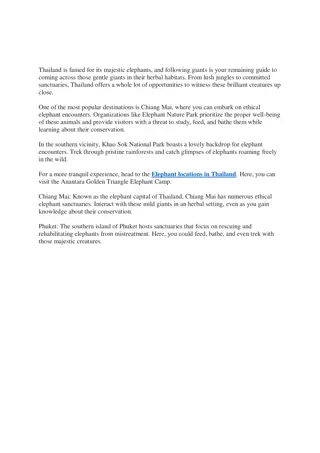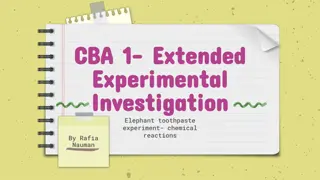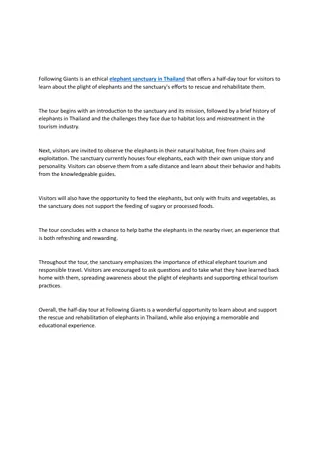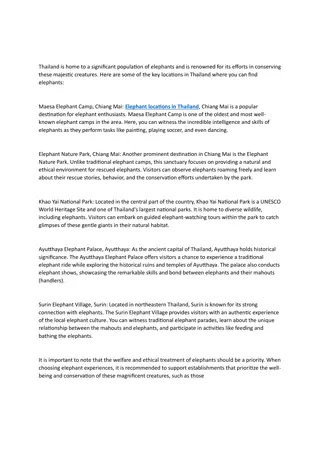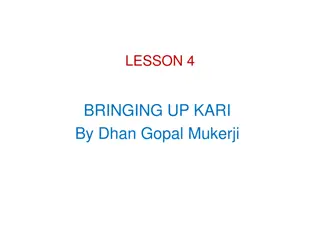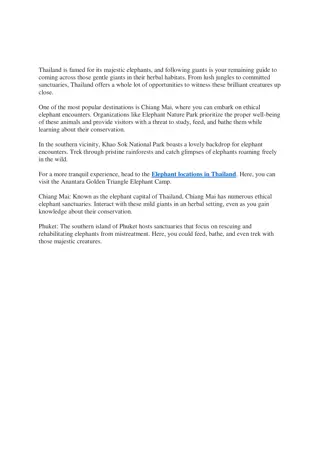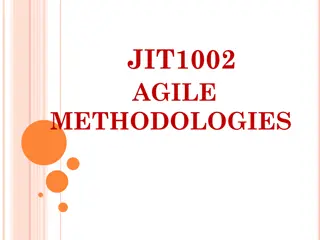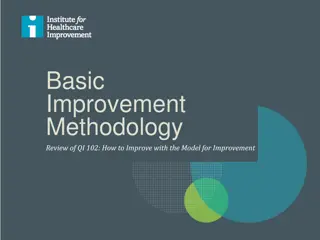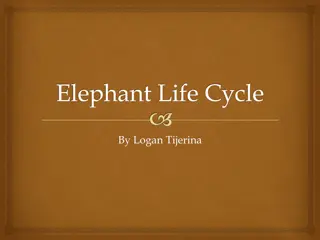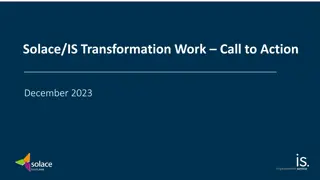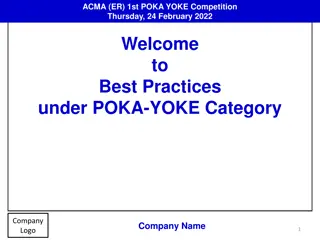Improvement of Methodologies for Tackling the Elephant
Framing the issue of standardization and communication in global emissions post-2012, addressing challenges and priorities for enhancing participation and efficiency with various stakeholders.
Download Presentation

Please find below an Image/Link to download the presentation.
The content on the website is provided AS IS for your information and personal use only. It may not be sold, licensed, or shared on other websites without obtaining consent from the author.If you encounter any issues during the download, it is possible that the publisher has removed the file from their server.
You are allowed to download the files provided on this website for personal or commercial use, subject to the condition that they are used lawfully. All files are the property of their respective owners.
The content on the website is provided AS IS for your information and personal use only. It may not be sold, licensed, or shared on other websites without obtaining consent from the author.
E N D
Presentation Transcript
Improvement of Methodologies Tackling the Elephant Anja Kollmuss, head of consulting a.kollmuss@southpolecarbon.com
Content Framing the issue Time Frame Examples from the field Standardization: where do we go from here? Communication: how do we get there? A word about myself and a disclaimer: Anecdotal evidence, simplifications, images for illustrative purposes I m not talking about additionality. I m not saying anything new. 2
Context: Where are we at? Consumed between 2000-2009: nearly one-third of the 2 (330 out of 1000 gigatons CO2) C budget Global emissions currently about 50 gigatons CO2e per year Expected CERs 1.4 gigatons Remember: CDM currently zero sum Source: Sivan Kartha, SEI http://sei-us.org/publications/id/309
Post- 2012 New Better Bigger Scaling-up mitigation Building and preserving capacity for post 2012 mechanisms Going beyond offsetting: beyond zero-sum Ensure environmental integrity Ensure equity between rich and poor Improve efficiency: e.g. reduce transaction costs Ensure attractiveness for investors Improve regional and sectoral distribution .
Can we get there? Complex Difficult Unprecedented scale Never done before 5
Different Actors UNFCCC Project developers DOEs DNAs Local stakeholders Environmental NGOs Policy makers & politicians Citizens 6
From a Project Developer Perspective Time Frame Examples from the field Standardization: where do we go from here? Communication: how do we get there? 8
Time Frame Given the uncertainties, what should be the priorities? Short term: improving and developing specific methodologies, developing support tools, improving processes, improving collaboration. No changes that would require a significant restructuring and change for many methodologies Given the EU focus on LDCs: How can LDC participation be improved? Tailoring approaches to LCDs: simplification, standardization, capacity building, guidance on issues relevant to LCDs: Specific guidance on suppressed demand Non-renewable biomass Focus on methodologies suitable for LCDs: transportation, charcoal, water purification, etc. .Long term: Longer-term view on improving mechanisms through standardization, benchmarks and other tools and policies. 9
Monitoring: When rural meets high-tech Type Meth. Projects Registered Projects w/ issued CERs % of Projects w/ CERs issued Methane recovery in animal manure managements systems 201 10 5% AMS-III.D. Methane recovery in wastewater treatment 74 7 10% AMS-III.H. -Thermal energy production with or without electricity 494 234 47% AMS.I.D/I.C - Grid connected renewable electricity generation Why the discrepancy? Monitoring requirements often hamper successful project implementation. example 11
Monitoring: Example of AMS.III.H monitoring set-up Project boundary FT 501A Power meter Genset - 1 H2S Gas Cleaner Genset - 2 Power meter FT 501B Gas Storage FT 501 Boiler FT 103 TT Flare AIT 101 FT 105 Biogas Plant FT 100 Starch Factory Equalization pond Secondary treatment UASB wastewater biogas electricity COD sampling point 12
Monitoring: Example of AMS.III.H monitoring Two monitoring procedures required: Chemical Oxygen Demand (COD): simple procedure: technically simple Measurements of methane at each destruction source: technically challenging More conservative has to be chosen Experience from South Pole projects: 15 verifications (mainly VERs): In ALL of them COD approach turned out to be more conservative. Relevance: Many projects in LDCs will be small scale and rural these projects need monitoring requirements that are tailored to such projects. 13
Monitoring: Technical Solutions Reduction of monitoring parameters: Allow for 2 monitoring options: Existing (complex) monitoring or Simple standardized but conservative approach Conservative default factors as alternative to exact monitoring: Utilization of conservative default factors for non-material parameters (e.g. electricity consumption of auxiliary equipment) or as alternative to complex measurements. on average conservative default factors and monitoring procedures will lead to fewer CERs preserving environmental integrity much reduced monitoring costs and much less delay at issuance ensured that projects are viable 14
Baseline Determination Some methods are too perscriptive and do not leave enough flexibility to account for specific project circumstances. Some methodologies have started out very simple and have become more and more complicated. 15
Baseline Determination AMS.III.D7/AMS.III.H: Initially very simple approaches (mostly based on IPCC methods), which became more and more complex over time. Possible solution: Make comparison between early meth versions and newer ones based on real monitoring data and check whether the early simplified versions could be used in conservative manner. AMS.I.C: Requirement for historic data to determine baseline emission factor is often a difficult requirement for small-scale projects (especially in LDC context). Possible solution: Baseline emission determination based on project output and back- calculation of emissions using default equipment efficiency and emission factors would be better suited for such projects. AM.III.H: The determination of baseline COD removal efficiency is complex , requiring historical records for existing plants and campaign data for greenfield projects. Possible solution: Options can be given to the PP to use default values depending on effluent type (starch, ethanol, POME) with some discount factor. Experience shows that lagoon efficiencies are very homogeneous for similar effluent types and/or industries. This can be verified based on PDD values in CDM pipeline. ... 16
Good examples New additionality guidelines for very small projects (<5MW/ <20GWh/year), EB 54 (Annex 15) Very encouraging development, especially in the context of LDCs. Expansion to PoAs and type III projects should be considered. AMS.III.H Removal of conditions related to anaerobic lagoons loading rate, and simplification for accounting of biogas generation and consumption. Tool to determine the baseline efficiency of thermal or electric energy generation systems Very flexible tool allowing for many options to calculate the baseline efficiency, including default factors. Tool to determine the remaining lifetime of equipment Several options for lifetime determination available including default factors. Tool could be further simplified for SSC projects., especially in LDCs. 17
Suggestions to the UNFCCC Secretariat Technical improvement prioritisation Systematic analysis of monitoring data to determine which parameters could be standartized or simplified w/o compromising environmental integirty. e.g. compare between early, simpler meth versions and newer ones based on real monitoring data and check whether the early simplified versions could be used in conservative manner. fact-based, scientifically sound way to assess potential for simplification and standardization. 19
Transportation: Congestion Impact Study Results Project Meth Rebound tCO2/a Speed tCO2/a Congestion impact tCO2/a ER per annum % Impact of congestion -2.4% AM0031 Bogota 9,000 -15,000 -6,000 247,000 -4.65% AM0031 Cali 11,000 -23,000 -12,000 258,000 2.86% AM0031 Pereira 2,000 -1,000 1,000 35,000 -1.82% AM0031 Barranquilla 1,000 -2,000 -1,000 55,000 -1.55% AM0031 Medellin 0 -4,000 -3,000 194,000 -18.16% AM0031 Guatemala -3,000 -95,000 -97,000 534,000 1.96% AM0031 Guadalajara 1,000 0 1,000 51,000 -12.26% AM0031 Quito 1,000 -19,000 -19,000 155,000 -0.92% AM0031 Chongqing -2,000 0 -2,000 218,000 -3.90% AM0031 Zhengzhou -8,000 0 -8,000 205,000 -2.86% AM0031 Joburg -1,000 0 -1,000 35,000 0.00% ACM0016 Seoul 0 0 0 >200,000
Everybody agrees, improved communication: but how? Workshops and informal discussions are great but not enough b/c follow-up is not ensured. Improving communication structures Clarify roles and responsibilites ensure accountability 22
Communication Structures: Maximizing the constructive input from different stakeholders: Project participants are asking for, e.g.: Stronger interaction at association/interest groups level (DOE Forum, PD Forum, IETA, CMIA, UNFCCC Secretariat) More direct communication: Possibility for bilateral communication via conference calls or emails prior to issuance of formal requests for information might decrease the work load significantly for all parties involved. NGO and Local Stakeholder are asking for, e.g.: Set up an email notification system for the beginning of commenting period Require translation of the PDD into the language of the host country Accept submission of comments in the language(s) of the host country How can the Secretariat ensure that non-market stakeholders (NGOs, civil society) are heard? How can the collaboration between PP, DOAs, and the Secretariat be strengthened? What should be the role and responsibility of DNAs (e.g. in standardization efforts)? How can checks and balances be improved? Two examples: 23
Communication Structures UNFCCC What should the follow-up be? How will prioritization be communicated? How can transparency be enhanced? 24
US Experience: Protocol Development 1. Internal research and scoping 2. Kick-off/scoping meeting 3. Multi-stakeholder workgroup formation 4. The Reserve drafts a protocol 5. Draft protocol considered by workgroup Provides technical expertise and practitioner experience Period meetings and individual consultation when needed 6. Revised draft released for public comment 7. Public workshop 8. Final version adoption by Reserve board in public session
Recommendation Build on the wealth of experience accumulated by all stakeholders over the last years: Technical recommendation: Using the large amount of collected data to do very targeted analysis and improvement. Structural/procedural recommendation: Improve communications structures to build trust and capacity. 26
